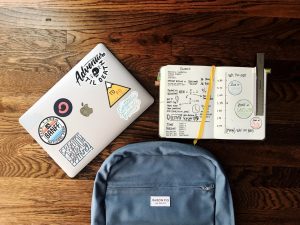At present, approximately 20% of undergraduates have a disability, according to the National Center for Education Statistics. While notable headway has been made in recent years with regards to accessibility, many students living with physical and developmental disabilities are still finding it difficult to gain an inclusive college education. Educational institutions need to build more wheelchair ramps, widen more doorways and passages, and embrace assistive technologies more readily. These technologies can, after all, make a college education increasingly more accessible for students with disabilities. These devices and systems, of which the following are just a few examples, are all designed to increase, maintain, or improve the educational abilities of a college student with disabilities.

Sip-and-puff systems aid students with mobility concerns
Sip-and-puff systems are often used by college students living with limited mobility. These systems make use of assistive technologies to send various signals to a device by making use of air pressure on a straw via sipping (inhaling) and puffing (exhaling). Computers, mobile devices, and a range of other technological devices can all be controlled via n sip-and-puff system, giving a student with disabilities greater access to course material and study aids.
There are a number of sip-and-puff systems that can be utilized by college students. Origin Instruments have a range of product offerings available that allow users to control a keyboard, mouse, or joystick with ease by making use of head mounted or gooseneck interfaces. Sip-and-puff systems can even be used to gain control of a TV remote or to play video games with friends or family. These systems are, therefore, not only credited as being a useful educational and practical tool but a social one as well.
Applications make communication easier
Mobile device technology is making it increasingly easier for students with disabilities to communicate and learn. The majority of assistive apps are available for both Android and Apple devices with many being free of charge. There are, for instance, a range of communication apps for cerebral palsy users that make it significantly easier to communicate both with lecturers and peers. Text-to-speech (TTS) apps such as Speak It! and I Can Speak lend a voice to non-verbal and verbally challenged students, adding a great degree of normalcy to their everyday lives. The technology operates by scanning the typed words and then reading it back in a synthesized voice. Thanks to the constant technological advances being made, TTS applications are rendering a more realistic and accurate service than ever before.
Sound-field Systems boost assistive learning
Sound-field systems are a great asset to any college classroom. Not only do these systems benefit students with hearing loss, but also those living with various auditory and learning difficulties according to the American Speech-Language-Hearing Association. Problems such as articulation disorders, central auditory processing disorder, and language delays are not uncommon in college students and can thwart learning significantly.
Sound-field systems, which make use of a microphone and mounted speakers, make college education increasingly accessible by amplifying sound and eliminating distance-related disturbances between lecturer and listener. Apart from being used in the classroom, sound-field systems can also make conference centers and meeting rooms a lot more accessible to both students and educators with disabilities.
Getting a college education is without a doubt a great achievement – especially for an individual living with a disability. Thankfully, earning an educational qualification such as a college degree and even enjoying college life in the broader sense of the word has become significantly easier to achieve thanks to the constant development of assistive technologies.

